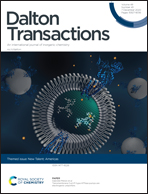The chemical and physical properties of tetravalent lanthanides: Pr, Nd, Tb, and Dy
Abstract
The fundamental redox chemistry and valence electronic structure of the lanthanides in molecular complexes and extended solids continues to be a fertile area of research. The contemporary understanding of the accessible oxidation states of the lanthanide elements and the variability in their electronic structure is the result of several paradigm shifts. While the lanthanide elements have already found widespread use in technical and consumer applications, the continued reevaluation of basic redox properties is a central chemical concern to establish a more complete description of periodic properties. This fundamental understanding of valence electronic structure as it is derived from oxidation state and coordination environment is essential for the continued development of lanthanides in quantum information science and quantum materials research. This review presents the chemical and physical properties of tetravalent lanthanide ions in extended solids and molecules with a focus on the elements apart from cerium: praseodymium, neodymium, terbium, and dysprosium.

- This article is part of the themed collections: New Talent: Americas and 2020 Frontier and Perspective articles


 Please wait while we load your content...
Please wait while we load your content...